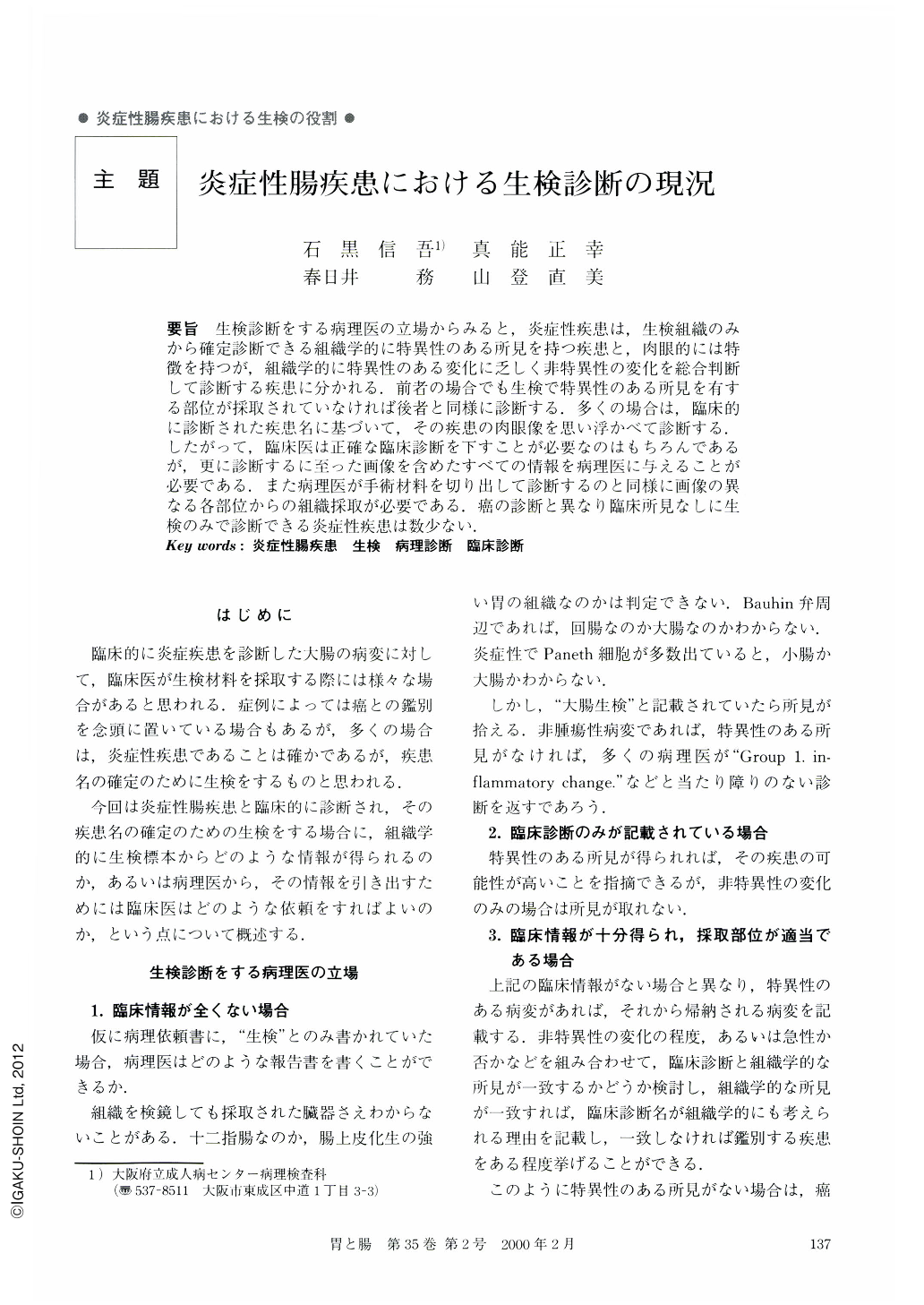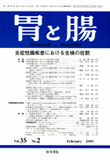Japanese
English
- 有料閲覧
- Abstract 文献概要
- 1ページ目 Look Inside
要旨 生検診断をする病理医の立場からみると,炎症性疾患は,生検組織のみから確定診断できる組織学的に特異性のある所見を持つ疾患と,肉眼的には特徴を持つが,組織学的に特異性のある変化に乏しく非特異性の変化を総合判断して診断する疾患に分かれる.前者の場合でも生検で特異性のある所見を有する部位が採取されていなければ後者と同様に診断する.多くの場合は,臨床的に診断された疾患名に基づいて,その疾患の肉眼像を思い浮かべて診断する.したがって,臨床医は正確な臨床診断を下すことが必要なのはもちろんであるが,更に診断するに至った画像を含めたすべての情報を病理医に与えることが必要である.また病理医が手術材料を切り出して診断するのと同様に画像の異なる各部位からの組織採取が必要である.癌の診断と異なり臨床所見なしに生検のみで診断できる炎症性疾患は数少ない.
From the aspect of biopsy diagnosis, inflammatory bowel disease is divided into two categories, one with specific histological change in the biopsy specimen, another with only non-specific change.
But, biopsy specimens are very small, so the specific histological change is difficult to detect in many cases that have specific change.
In inflammatory bowel disease, many cases show only non-specific change in biopsy specimens, so the pathologists can diagnose no more the fact than that the specimen is compatible with or not compatible with the disease diagnosed clinically.
For that reason, clinicians should offer to pathologists not only clinical diagnosis but also all clinical data including age, sex and medical history. When pathologists diagnose the inflammatory bowel disease in biopsy, they imagine the macroscopic appearance of the disease, so that clinicians can reach the collect clinical diagnosis and take biopsy specimens from different parts with different endoscopic appearance.
In pathological diagnosis of biopsy specimen, there are few diseases that can be diagnosed without clinical data including clinical diagnosis.

Copyright © 2000, Igaku-Shoin Ltd. All rights reserved.


